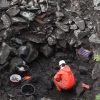In the wake of Hurricane Helene’s devastation along Florida’s Gulf Coast, one community, Hunters Point in Cortez, Florida, stood out for its resilience. While surrounding neighborhoods suffered significant damage, including waist-deep flooding and power outages, Hunters Point emerged untouched, with homes surviving the storm without significant issues.
This was not a coincidence but the result of careful planning and design by the development’s founder, Marshall Gobuty. The community’s first residents, who moved in in 2022, had already weathered three major hurricanes—Ian, Idalia, and now Helene—without serious consequences, thanks to the development’s focus on sustainability and resilience.
Gobuty, who envisioned a housing development that could withstand the challenges posed by hurricanes, designed the homes with materials and systems aimed at minimizing damage from extreme weather events. His goal was to create homes that would be energy-efficient while also offering protection from natural disasters.
According to Gobuty, climate change is real, and homes need to be built to handle the realities of this changing environment. He spent 18 months testing and refining the designs before construction began, ensuring that the homes would not only be disaster-resistant but also offer a high quality of life for residents.

The homes at Hunters Point are constructed from a combination of steel, concrete, lumber, and hard foam. These materials provide a solid foundation for the homes, with elevated structures that sit 16 feet above the flood zone, offering additional protection against rising waters. The roofs and floors are reinforced with steel, while the walls are framed with durable two-by-six lumber, which is stronger than the standard two-by-four.
The windows are hurricane-grade, designed to resist storm damage, and the solar panels on the roofs are secured to prevent them from being torn off by strong winds. These solar panels are connected to backup batteries, ensuring that the homes can remain powered even during outages.
In addition to the structural features, Hunters Point incorporates a sophisticated water management system. Swales, which are sunken grassy areas, are installed between the homes to direct water toward a retention pond.
This system prevents flooding by capturing and holding the excess water that could otherwise inundate the properties. The roads in the development are also designed with a slight slope to encourage water runoff, further reducing the risk of flooding. When Hurricane Helene hit, although some water and debris came close to the development, no damage occurred, and all homes remained dry and intact.
The solar power system at Hunters Point is another crucial feature. The community’s homes generate more energy than they consume, even on days when there is little sun, thanks to the backup batteries that can power the homes for up to 10 days.
This self-sufficiency has allowed residents to remain unaffected by power outages that plagued other areas during the storm. Salesperson Shaun Williams emphasized that these homes are not just designed to withstand storms, but also to reduce utility bills by producing surplus energy under normal conditions.
Despite being a newer development, with only 31 of 86 homes completed, Hunters Point has proven to be a successful model of resilience and sustainability. The homes are priced at over $1.25 million each, reflecting the high quality of materials and technology used.
While most of the surrounding neighborhoods experienced severe flooding and property damage, including four-foot storm surges that destroyed homes, Hunters Point was spared. As the storm’s death toll continues to rise, and recovery efforts intensify, Hunters Point stands as a testament to the possibility of building homes that can not only survive but thrive in the face of climate change and natural disasters.

